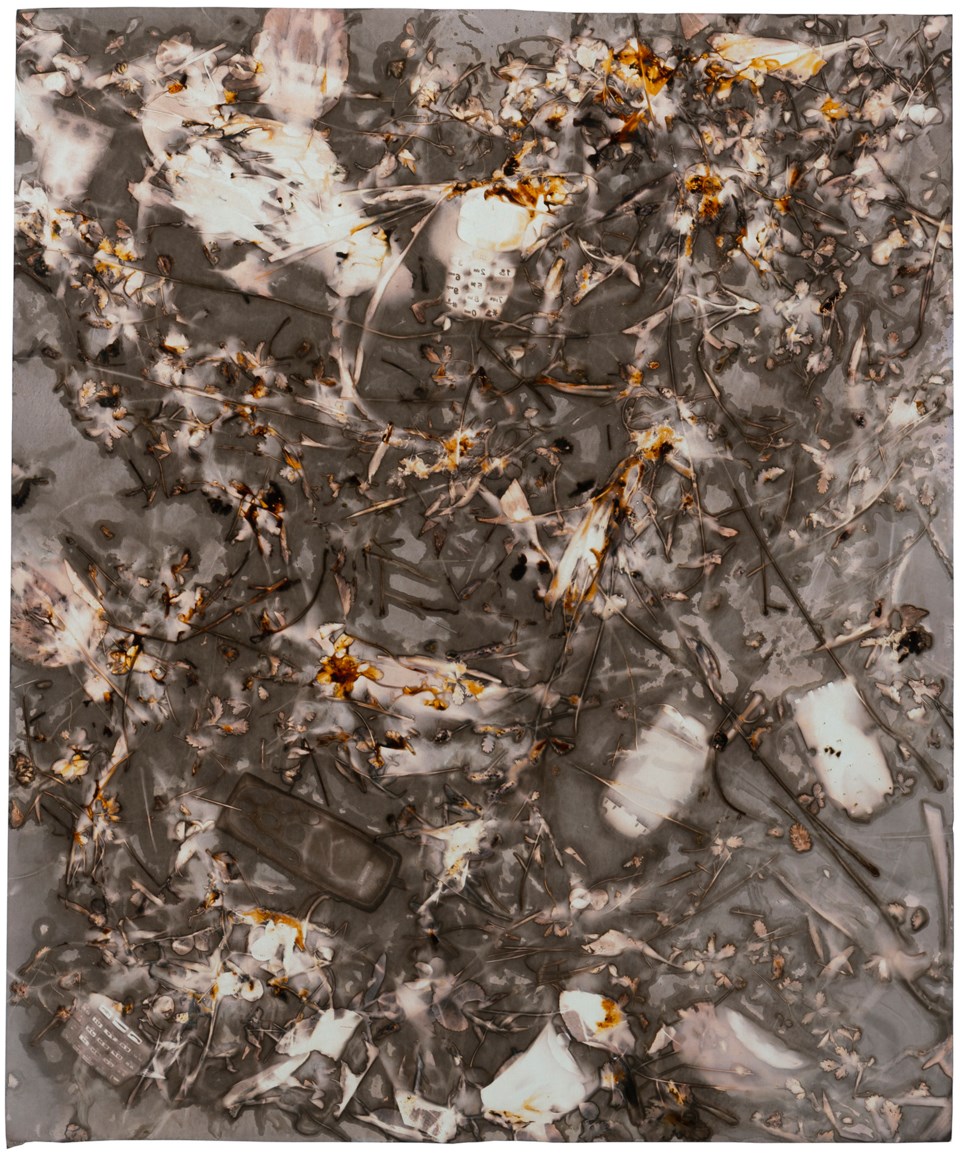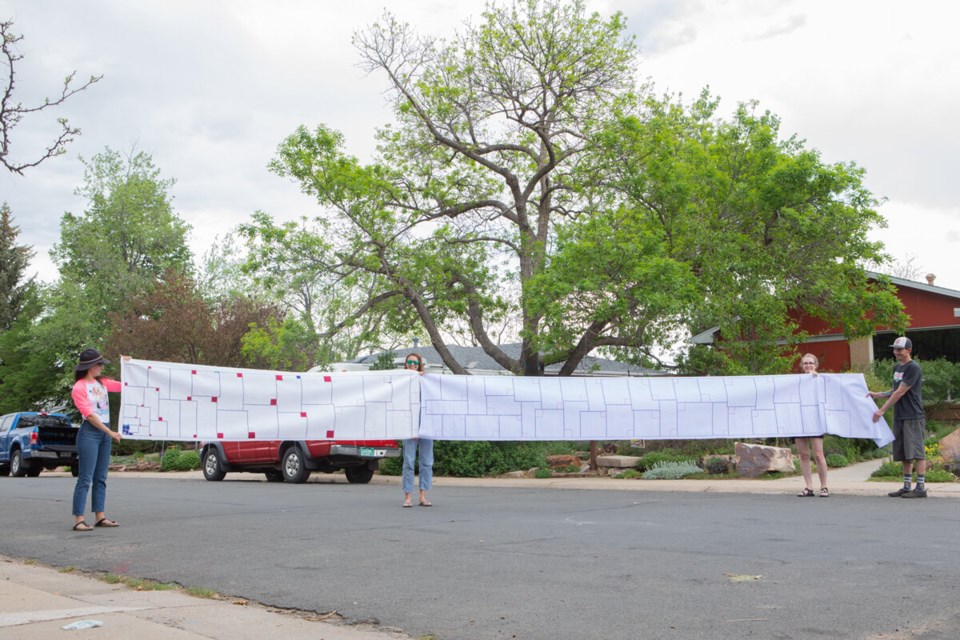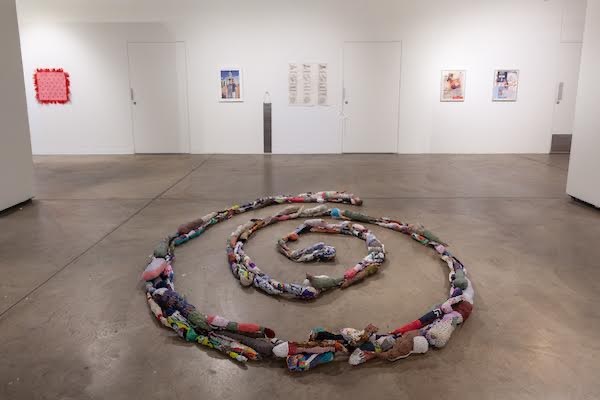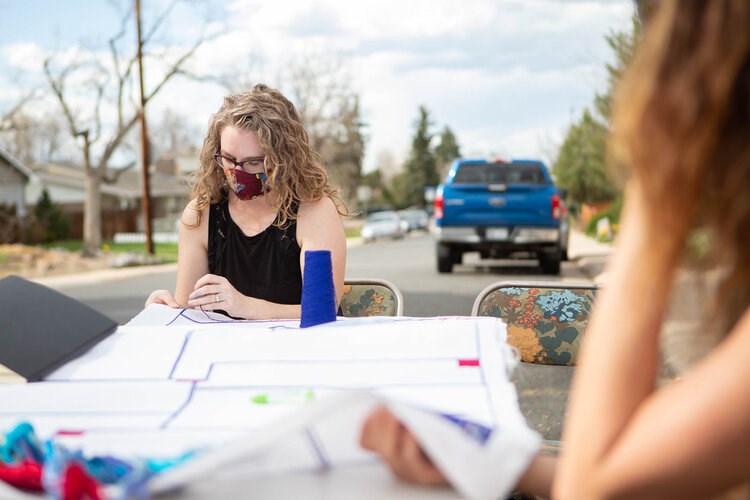The Firehouse Art Center’s contribution to the Month of Photography is a snapshot of headline-making topics from last year: the Black Lives Matter protests in the summer, climate change and the COVID-19 pandemic.
Eventful 2020 will be viewed through the artist lens in the “Situation Report” exhibit on display from Thursday through April 4 in Firehouse’s main gallery. Curator Brandy Coons said the show explores how artists record and react to current events.
“It was built around the idea of presenting, using photography, as a way to record historical events and choosing to approach major concerns that really became overwhelming and front and center very recently in 2020,” Coons said. “I think the year of 2020 was so packed with just an overwhelming kind of news cycle, really. And so, I wanted to look at the ways that artists, photographers are reacting to documenting and sort of presenting those three broad themes that they felt were kind of most front running last year.”
One of those broad themes being the summer protests calling for racial justice, Coons selected work from two photographers who documented protests in Denver. Nolan Septer captured some of the first days of protests in Denver, displayed mostly in black and white. Armando Geneyro, a Denver documentary photographer, will show two photographs from his Street Journal series documenting the protests.
Human relation to nature is another theme explored in the show. Erin Dvorak will show a few images from her South Platte River Studies, a project exploring land and water management using a large-format film camera.
Lynn Cazabon, an artist based in Baltimore, Maryland, is showing five images from her “Diluvian” series that explores the rate of decay of organic materials versus discarded electronics. She started the ongoing project in 2008, using expired black and white photographic paper. Contact prints, or exposing objects onto paper instead of using a camera, of electronics and natural elements are made by lengthy exposures from the sun. Some exposures take eight hours, Cazabon said.
 "Situation Report" at the Firehouse Art Center will feature five images from Lynn Cazabon's “Diluvian” series that explores the rate of decay of organic materials versus discarded electronics. Courtesy photo
"Situation Report" at the Firehouse Art Center will feature five images from Lynn Cazabon's “Diluvian” series that explores the rate of decay of organic materials versus discarded electronics. Courtesy photo“When you see the images you see this flood of electronics and organic materials and it looks like you're kind of looking at the aftermath of a flood,” Cazabon said. “It’s really referring to that kind of never-ending stream of gadgets that we create and the debris they leave behind.”
Some themes weren’t as accessible for photographers to capture, Coons said. She curated work from Boulder County Parks and Open Space, including photos of the CalWood fire taken by park rangers. Coons saw artistry in the images despite their being intended for documentation and public safety rather than to be displayed in an art gallery.
“Photography itself has an interesting relationship to archiving. Really, I think over time, it's an interesting thing that we look back at older photographs and often recognize the artistry and images that were created as simple documentation,” she said.
The COVID-19 pandemic is the only theme in the gallery that will be explored with a medium other than photography. Coons selected two textile artworks. She added it’s a commentary on the limits of photography, as photographers were limited by safety protocols and patient liability.
“Documentation of the COVID-19 pandemic through photography is really difficult because it's a health thing that encounters privacy and liability issues,” Coons said. “There’s not a lot of photographers hanging out in hospitals for safety and patient confidentiality and all those reasons. So what we have are fine artists reacting to COVID-19 as an experience of the cultural moment.”
Heather Schulte’s work “Situation Report,” for which the exhibit is named, will be the centerpiece of the show and hang throughout the gallery. It’s a 39-foot ribbon of fabric with stitches of blue and red thread representing COVID-19 daily cases and deaths in the U.S.
 A photo of Heather Schulte’s work “Situation Report,” for which the new Firehouse Art Center exhibit is named, in progress. The fabric piece will be the centerpiece of the show and hang throughout the gallery. It’s a 39-foot ribbon of fabric with stitches of blue and red thread representing COVID-19 daily cases and deaths in the U.S. Courtesy photo
A photo of Heather Schulte’s work “Situation Report,” for which the new Firehouse Art Center exhibit is named, in progress. The fabric piece will be the centerpiece of the show and hang throughout the gallery. It’s a 39-foot ribbon of fabric with stitches of blue and red thread representing COVID-19 daily cases and deaths in the U.S. Courtesy photoFort Collins-based fiber artist Elizabeth Morisette has sewn and donated more than 1,000 fabric masks during the pandemic. She used scraps from the masks to form 100 abstract sculptures she calls “antibodies.”
The repetitive act of sewing, stuffing and stitching the scraps was a meditative practice for her to process the pandemic. Morisette said she hopes viewers of her “Antibodies” installation will think about the ways they have coped with events in the last year.
 Elizabeth Morisette has sewn and donated more than 1,000 fabric masks during the pandemic. She used scraps from the masks to form 100 abstract sculptures she calls “antibodies,” which will be featured in the "Situation Report" exhibit at the Firehouse Art Center. Courtesy photo
Elizabeth Morisette has sewn and donated more than 1,000 fabric masks during the pandemic. She used scraps from the masks to form 100 abstract sculptures she calls “antibodies,” which will be featured in the "Situation Report" exhibit at the Firehouse Art Center. Courtesy photo“I want them to take away kind of an idea of we've all been in this, and we are all reacting in different ways and all the ways that you're reacting to it is OK,” she said. “So it's kind of like we're all responding to this in one way or another. Whether you're an artist or not you're, you're definitely affected by this change.”
An opening reception for the “Situation Report” will be from 6:30 to 9 p.m. Friday at the Firehouse Art Center. For those not wanting to attend in person, a Facebook Livestream on Firehouse’s page will run earlier from 6 to 6:30 p.m.
Correction: The fabric ribbon is 39 feet but was originally reported as being 139 feet.



